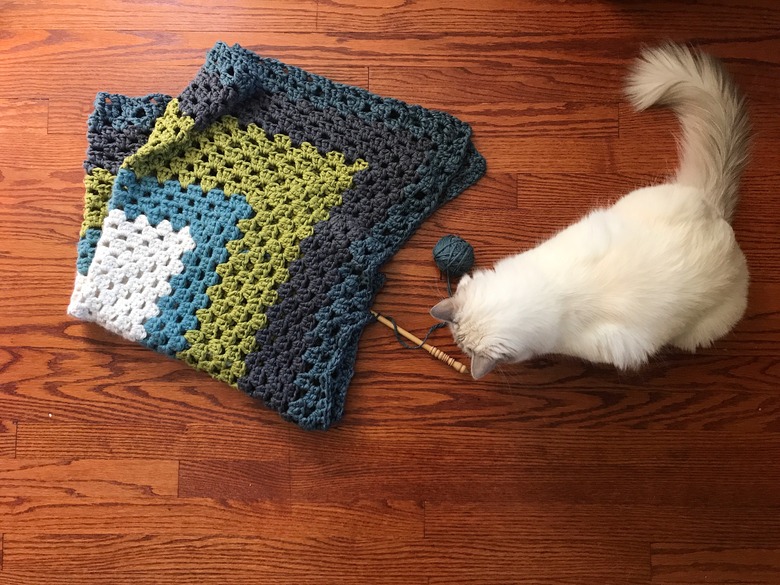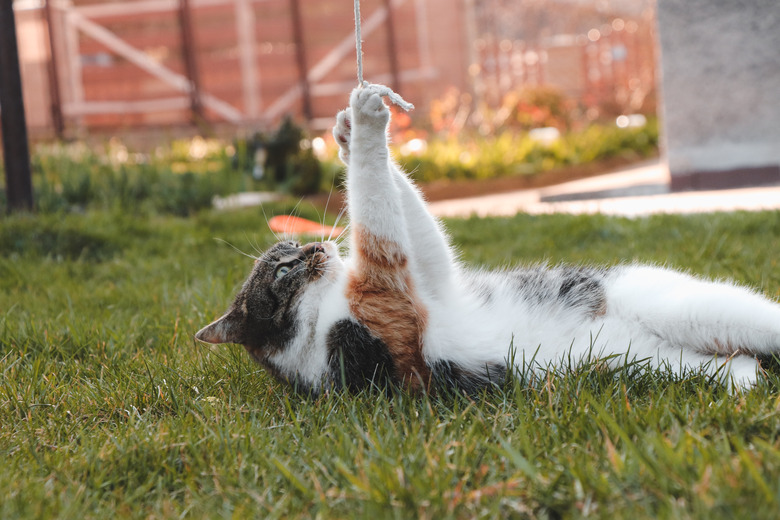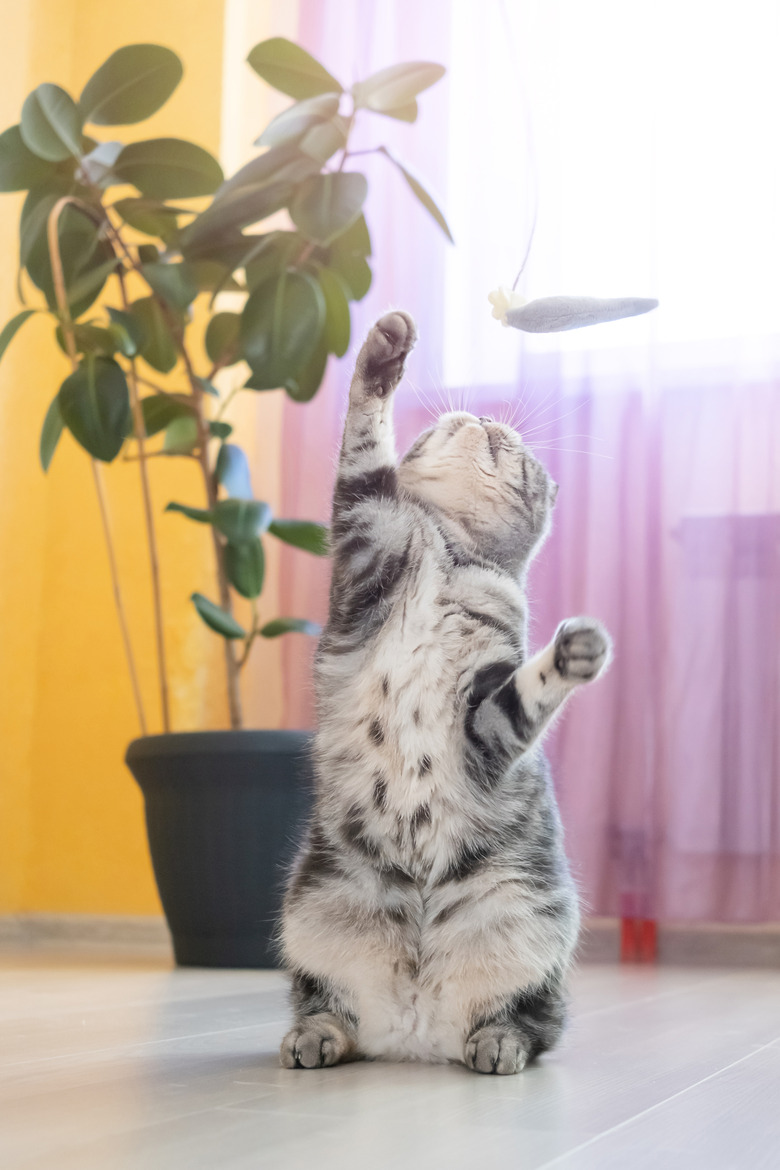Why Do Cats Like String?
There's an old-fashioned notion of a ball of yarn being the perfect toy for a kitten. The ball of yarn sticks to the kitten's claws and eventually becomes unwound, leading to strings trailing around the house, which seems to be pure joy to a cat. Cats like to play with toys that create movement in unpredictable ways. A piece of string, whether it is moved through the air or snaked across the floor, certainly achieves that.
Cats and their hunting instinct
Cats and their hunting instinct
Hunting prey is hard-wired into a cat's brain, and the playtime they get at home with cat toys is an important way to replicate that. A 2013 study in Nature Communications reported that wild (un-owned) and domesticated cats that are allowed to free-range outside kill 1.3 to 4 billion birds and 6.3 to 22.3 billion mammals annually. These researchers say that free-ranging cats "are likely the single greatest source of anthropogenic mortality for US birds and mammals."
When our cats are indoor cats, they need stimulation, and playing with things like feather wands, mice that roll on the floor, or laser pointer toys that you can find on Amazon are all designed to stimulate their hunting instincts. Mother cats teach their kittens to hunt by allowing her to play with her flicking tail. In the wild, the mother cat will likely go out and hunt small animals like mice and bring them back for her kittens. While it may look like the cats are "playing" with the animals, in actuality, it is an important lesson in learning how to deal with real, living, squiggling, flying or squirming prey.
It isn't much of a stretch to imagine a piece of string trailing off a ball of yarn as the long, skinny tail of a mouse, chipmunk, or squirrel. When the kitten pounces on the string or swats at it from behind the couch, it's a display of their instinctive hunting skills. Everything that a cat does, from its hiding positions, to its stalk and pounce positions, to the jumping and swatting it does when playing, is part of its normal hunting behavior.
Is string a safe toy for a cat?
Is string a safe toy for a cat?
Old picture books for children almost always show a kitten with a ball of yarn and a bowl of milk or cream. In fact, you may walk through a pet store and see a ball of yarn for sale in the cat toy aisle. Granted, these commercial cat toy balls of yarn are probably safer than a real ball of yarn, but in reality, strings or yarn are not safe cat toys. For that matter, milk and cream are not great for cats either!
Any piece of string-like material such as yarn or dental floss could cause a serious problem if your cat eats it. Once ingested it can bind up the intestines, which can be life threatening. For any cat, but especially a small kitten, becoming entangled in a piece of string could lead to strangulation. If you do play with string or yarn with your cat, only do so while they are under supervision. Remove the toy once playtime is over. Also, remove the toy if it starts to fall apart. Your cat's sharp claws and teeth can cause a toy to come apart faster than you might think.
In summary
In summary
It's clear that for cats, their playtime mimics their hunting skills. The best cat toys stimulate their hunting instincts, which is what makes the cat want to play with it. If a toy just lays there, it's not very interesting to a cat! When you play with a cat with a piece of string, it replicates the hunting skills they would use when hunting prey like mice. To the cat, there's not much difference between the tail of a mouse and the piece of string you're swishing around.
If you do let your cat pounce on a ball of yarn, stay in the room to supervise her. A piece of string is not a safe toy for a cat, because it could be ingested and cause life-threatening internal injuries. A piece of string, or any string-like material such as dental floss, could pose a strangulation threat to a small kitten. Cats are hard-wired to pounce on anything that resembles their natural prey of birds and small mammals, so your piece of string certainly fits the bill. But just make sure you are playing in a safe way with your cat.


